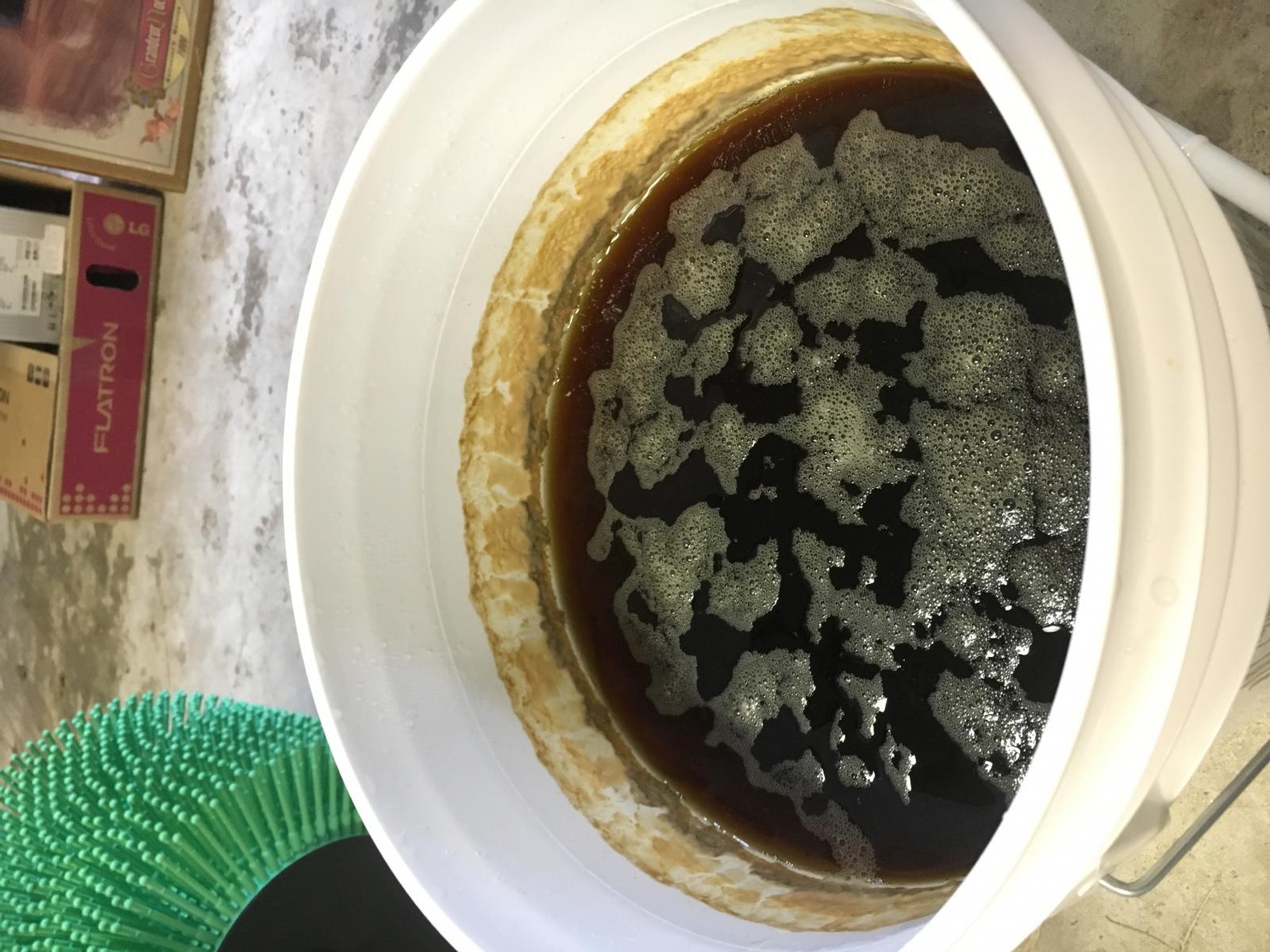IrnThistleBru
Member
- Joined
- Jan 6, 2017
- Messages
- 5
- Reaction score
- 0
**5g batch currently in day 9 of primary fermentation (american amber ale), plan to rack to secondary**
Cold front came through last night and knocked my temp from between 64-68F down to 57-59*F. I am worried about yeast going dormant or just something going off from the drop in temp. Most recent SG reading is 1.11 ( below target )
American Amber Ale
Pitched 90% of 11.5g dry yeast packet Safale US - 05 @ 69*F
- vigorously stirred wort before sprinkling
Suggested ferm temp : 64-72*F
Actual initial ferm temp : 68*F
Expected OG: 1.052
Expected FG: 1.015
Actual OG: 1.053
Sp. Grav @ day 6 = 1.012 (already below target)
- Sludgy tan bubble layer over wort [normal?]
Sp. Grav @ day 9 = 1.011
- Sludgy bubbles are gone now just little bubbles here and there
What should I do?
-Rack to secondary and bring inside?
-keep in primary, Stir, and bring inside?
-Raise temperature before i rack to second.? Rack then raise temp?
Also I have read about cold crashing, might this cold front have just cold crashed my ale for me? I tasted my last hydrometer sample and it tastes pretty good but this is my first brew so IDK!
Help and Tips are greatly appreciated! about to brew again and would enjoy some professional/experienced input.. Anything I did especially wrong or right?
Cold front came through last night and knocked my temp from between 64-68F down to 57-59*F. I am worried about yeast going dormant or just something going off from the drop in temp. Most recent SG reading is 1.11 ( below target )
American Amber Ale
Pitched 90% of 11.5g dry yeast packet Safale US - 05 @ 69*F
- vigorously stirred wort before sprinkling
Suggested ferm temp : 64-72*F
Actual initial ferm temp : 68*F
Expected OG: 1.052
Expected FG: 1.015
Actual OG: 1.053
Sp. Grav @ day 6 = 1.012 (already below target)
- Sludgy tan bubble layer over wort [normal?]
Sp. Grav @ day 9 = 1.011
- Sludgy bubbles are gone now just little bubbles here and there
What should I do?
-Rack to secondary and bring inside?
-keep in primary, Stir, and bring inside?
-Raise temperature before i rack to second.? Rack then raise temp?
Also I have read about cold crashing, might this cold front have just cold crashed my ale for me? I tasted my last hydrometer sample and it tastes pretty good but this is my first brew so IDK!
Help and Tips are greatly appreciated! about to brew again and would enjoy some professional/experienced input.. Anything I did especially wrong or right?
Last edited:





























![Craft A Brew - Safale BE-256 Yeast - Fermentis - Belgian Ale Dry Yeast - For Belgian & Strong Ales - Ingredients for Home Brewing - Beer Making Supplies - [3 Pack]](https://m.media-amazon.com/images/I/51bcKEwQmWL._SL500_.jpg)





























